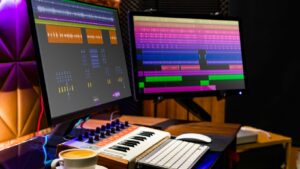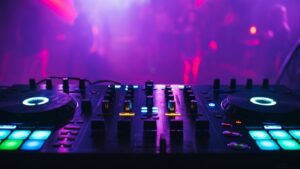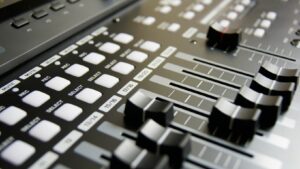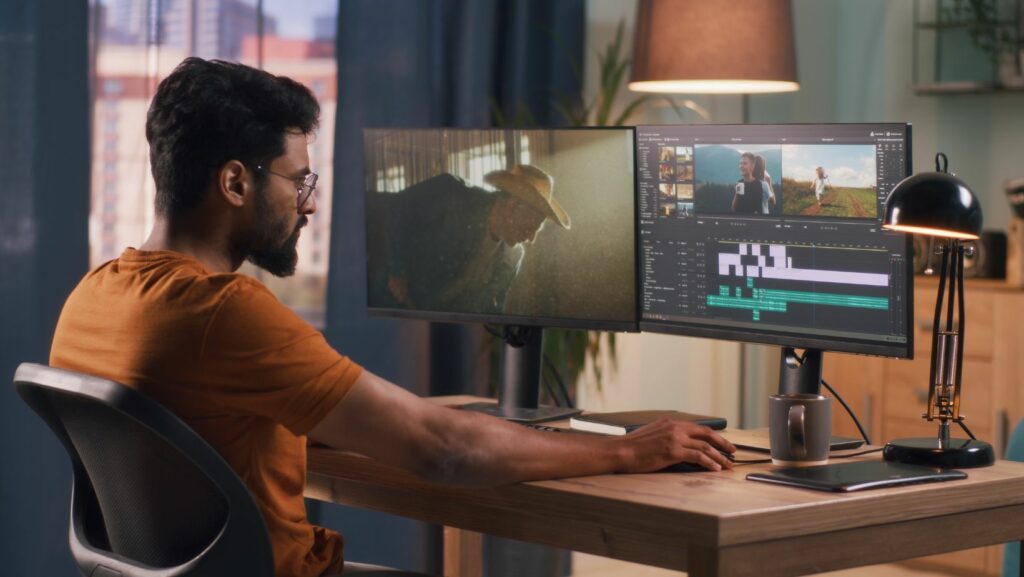Mixing Techniques for Pop Music Part 1 Online Courses
In the world of music production, mixing is an art form that requires both technical skill and a creative touch. For aspiring pop music producers, understanding the nuances of mixing is essential to achieving professional sound quality and standing out in a competitive industry. While mixing techniques vary depending on the genre, pop music presents unique challenges and opportunities for producers to showcase their style. In this article, we’ll explore the first part of essential Mixing Techniques for Pop Music Part 1 Online Courses, focusing on the top online courses that can help you hone your skills and elevate your sound. 
Pop music, by nature, is designed to be accessible, catchy, and polished. A successful pop track doesn’t just rely on catchy melodies or lyrics—it also needs a mix that highlights each element clearly and cohesively. Mixing allows you to balance different tracks (vocals, drums, synths, bass, etc.) so that they blend smoothly while retaining their individual character. Whether it’s placing the vocals in the front, making the drums punchy, or ensuring the bass groove stays tight, good mixing ensures that all elements shine in a well-balanced production.
Moreover, a well-mixed track can significantly impact the overall emotional delivery of a song. A pop song might call for a bright, wide sound with crisp highs and deep, punchy lows, which requires specific mixing techniques and tools to achieve.
Key Mixing Techniques for Pop Music Part 1 Online Courses
Before diving into mixing pop tracks, it’s essential to have a solid foundation in the basic techniques and concepts. Here’s a look at some core mixing techniques that you’ll need to master, as well as online courses to help you develop these skills. In pop music, EQ is one of the most important tools to create space in your mix. The equalizer helps you shape the sound by cutting or boosting specific frequencies. For example, in pop vocals, you may want to boost the higher frequencies to enhance the clarity and presence of the voice. Similarly, EQ can help you carve out space for each element of your track, ensuring that the bass doesn’t overpower the vocals or that the snare drum cuts through the mix.
Many online courses cover the importance of EQ in detail, demonstrating how to use EQ to create a balanced and polished mix.
Recommended Online Courses:
- “Mixing Pop Music” on Skillshare: A great introductory course that teaches EQ techniques specific to pop vocals and instruments.
- “The Complete Mixing Masterclass” on Udemy: This course covers EQ techniques as part of a broader curriculum designed to help producers mix any genre, including pop.
 Compression is used to control the dynamic range of a track, making the loud parts quieter and the quiet parts louder. For pop music, compression is often applied to the vocals, drums, and bass to maintain consistent volume and ensure nothing gets lost in the mix. A well-compressed vocal can sit perfectly in the center of the track, with the right amount of presence and clarity.
Compression is used to control the dynamic range of a track, making the loud parts quieter and the quiet parts louder. For pop music, compression is often applied to the vocals, drums, and bass to maintain consistent volume and ensure nothing gets lost in the mix. A well-compressed vocal can sit perfectly in the center of the track, with the right amount of presence and clarity.
Recommended Online Courses:
- “Pro Mixing Techniques” on Coursera: A deep dive into advanced compression techniques and how they can be applied in pop music.
- “Music Production in Logic Pro X: The Complete Guide” on Skillshare: This course breaks down the basics of compression, especially for dynamic pop vocals and instrumental tracks.
In pop music, reverb and delay can add depth and space to the mix. These effects are often applied to vocals and instruments to give the track a sense of dimension. Reverb is used to simulate the effect of a sound reflecting off surfaces, while delay creates a repeated sound that can add rhythm and texture. These effects are especially important in pop, where the atmosphere and vibe are just as critical as the core elements.
Recommended Online Courses:
- “Advanced Mixing Techniques for Pop and EDM” on MasterClass: Learn about advanced reverb and delay techniques for crafting lush pop soundscapes.
- “Reverb and Delay Mastery” on Skillshare: A course dedicated to teaching how to use these two effects effectively in any genre, with a focus on pop.
Best Online Courses for Mixing Pop Music
If you’re serious about learning Mixing Techniques for Pop Music Part 1 Online Courses, enrolling in a course can be an excellent way to gain hands-on experience and receive feedback from industry professionals. Here are some of the top online courses to consider:
- “Mixing Pop Music: A Complete Guide” on Skillshare – A beginner-friendly course that focuses on the essentials of mixing in pop.
- “Music Production and Mixing for Beginners” on Udemy – A comprehensive course perfect for those who are just starting with pop music production.
- “Music Production in Logic Pro X: Advanced Mixing” on Skillshare – Learn advanced mixing techniques tailored for Logic Pro users, with a focus on pop genres.
Mixing pop music is an intricate process that requires knowledge of various techniques to ensure a polished and professional sound. Whether you’re working on vocals, instruments, or effects, learning how to use EQ, compression, reverb, delay, and automation will allow you to shape your tracks with precision. The online courses mentioned above are excellent resources to get started, and as you continue learning, you’ll gain the skills needed to create radio-ready pop hits.



